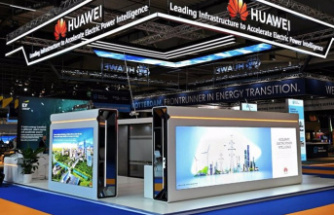It could be so nice: On the road, there are only E-vehicles, the traffic is quiet, everywhere is easy to recharge and all of that is completely without CO2 emissions. Almost too good to be true – and it is, unfortunately. Because even if E-mobility is one of the biggest hopefuls in the debate about the future of mobility, it remains under the current political and technical framework is only a utopia.
Our practice test E-district buses has shown that, In contrast to the positive experiences in France, we can point out in Germany after the year-long project on some problems. Not only in practice, there were significant hurdles, including the lack of interest and the lack of support of the policy made it more difcult to project values. Lack of Manufacturers, lack of infrastructure, as well as any funding opportunities can be mentioned here as examples.
Short ranges, long charging times and lack of infrastructureWhile electric mobility in passenger Cars and public transport becomes more widespread, it is currently in the long-distance bus sector, there is no real Alternative. Currently for the European market, approved long-distance buses have very short ranges and long charging times. About the author:
André Schwämmlein, co-founder of Flixmobility is.
Only if electric buses cover a distance of about 400 kilometers in just one hour of charging time, which could be used in this technology efficiently and comprehensively for the line operation.
For our E-bus projects, we don't have to rely on models from China, because local firms are technologically simple in the situation, the corresponding models for the long-haul to offer.
Likewise, there is a lack in Germany is currently of a sufficient charging infrastructure. In Germany, only one public electric charging stations for long distance buses yet exist. Opportunities for state funding exist only for the transport. None of our previous long-distance bus projects was state-supported. Without initiatives from the world of politics and the economy a permanent mobility is turning to E-long-distance transport is not conceivable.
The dream of a CO2-neutral transportdrives, drives, in addition to pure electric also, and increasingly, to hydrogen and fuel cells worked. Both in the Car as well as in the case of buses, significant advantages exist here compared to purely electric actuators: The ranges are larger than in the case of electric vehicles, and a decisive advantage is the short tank time.
In the case of buses, there is a lack, however, of manufacturers and of the appropriate infrastructure in Germany. During the journey, will encounter no CO2, the production of hydrogen is currently highly energy intensive and not really sustainable. The Emissions have been so moved actually just.
Only less Car transport can protect the climateThe E-mobility and hydrogen drives will apply in the transport policy as a great carrier of hope. You shift the emissions just from the exhaust to the power plant, is solved the climate problem, that is the motto. According to the Motto: Out of sight, out of mind.
But the real Problem of the transport sector is that too many people with the car are on the road. The mobility and environmental problems would not disappear when changing over night every car with a conventional counter of an alternative drive.
You also can't underestimate how resource - and energy - intensive vehicles, the manufacture of electric-and hydrogen. In addition, it solves no problems, then just when instead of the gasoline - and Diesel-powered Cars, the electric or hydrogen - powered versions, in a traffic jam would be.
There are simply too many people alone in their cars on the road and on routes that you could actually share with many other travelers in Bus and train. Therefore, the motto must be: get Out of private transport into the common public transport! With the SCC-exchange of letters next to values, and in the short term and the long term Top return on investment! (Partner quote) Here is an exclusive 30-day free trial!
The basic idea is wrongThe advantages are obvious. On the existing infrastructure a lot more people could be transported at the same time less traffic jam. But this notion is not currently as hot air.
The purchase of alternatively-powered vehicles is expensive, there is no manufacturer and only half-hearted support from the policy: A large part of the subsidies flows into a passenger Car-purchase premium for E-cars, while buses will only be promoted in the public TRANSPORT. Why draw an arbitrary boundary between local and long - distance transport?
Instead, I believe that the solution lies in the combination of all eco-friendly Alternatives. It is illusory to think that in ten years, all of them are only with electric or fuel - cell drive on the road.
Until then, you should, instead of just a solution, a Mix of different fuel and drive options and, above all, a shift from individual Cars to collective transport. Realistically, this includes the modern Euro-VI-Diesel, giving even today, the long-distance bus is the best environmental record of all the traffic.
Sustainable travel is not only in ten years is important, but now. So we have to be willing to compromise. Instead of giving us dreams and utopias add, must as soon as possible, the measure is promoted, which helps immediately: The transition from cars into buses and trains, the need to be with a Mix of alternative drives as fast as possible, completely CO2-neutral.
see also: consequences of the zero interest rate policy - the ECB is split in the society - that will get the Rich to feel "Absolute No-Go!": If you combine the two nutrients that take you immediately to FOCUS Online muscle building and nutrition: "Absolute No-Go!": If you combine the two nutrients that take you immediately to
Date Of Update: 10 February 2020, 15:01












